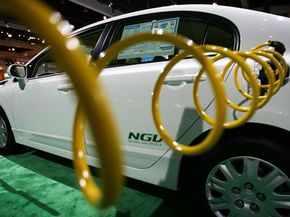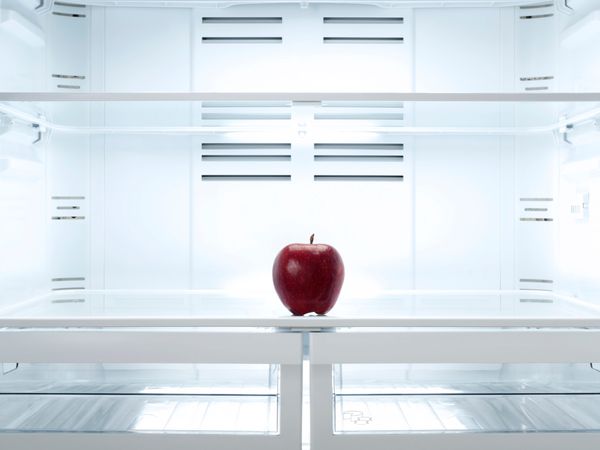Chances are pretty good that if you've ridden a bus lately, you've ridden in a natural gas vehicle (NGV). NGVs don't run on the same fuel you get at the corner gas station. Instead they are powered with compressed natural gas (CNG), or sometimes liquefied natural gas (LNG), or a blend of hydrogen and CNG (HCNG).
CNG is primarily methane (CH4), not petroleum (like gasoline and diesel), and it's cheaper than both petroleum and hydrogen. While it's still a greenhouse gas (it's a carbon-emitting fossil fuel), it's considered cleaner than petroleum -- natural gas releases 30 to 40 percent less greenhouse gas emissions than gasoline [source:FuelEconomy.gov].
Advertisement
There are more than 8.7 million CNG-powered vehicles on the roads around the world today. In the United States, though, the numbers are small. Americans generally use natural gas to generate electricity and heat. While the average U.S. household owns 2.2 automobiles, there are only about 150,000 NGVs in the country and of those, a small fraction are passenger cars (most arefleet vehiclessuch as buses, taxis, delivery trucks and municipal vehicles) [sources: CNGnow andMirhaydari]. Emissions from NGVs are less than 95 percent of that from gasoline or diesel vehicles [source:Natural Fuels Solutions].
While several automakers offer lines of CNG-powered vehicles for fleet use (for example, Ford manufactures CNG-powered Crown Victorias for taxis) and the world market is NGV-friendly, American consumers have little to choose from when considering a CNG-powered passenger car. You can either spend between $2,000 and $4,000 to convert your gasoline-powered car to CNG or consider purchasing the Honda CNG-powered Civic GX. To compliment the Civic GX, American Honda Motor also began selling ahome refueling appliance(HRA) called Phill.Phillis designed for consumers to use in residential environments, either inside a garage or outdoors, for convenient fill-ups in a market with limited refueling stations.
Advertisement



